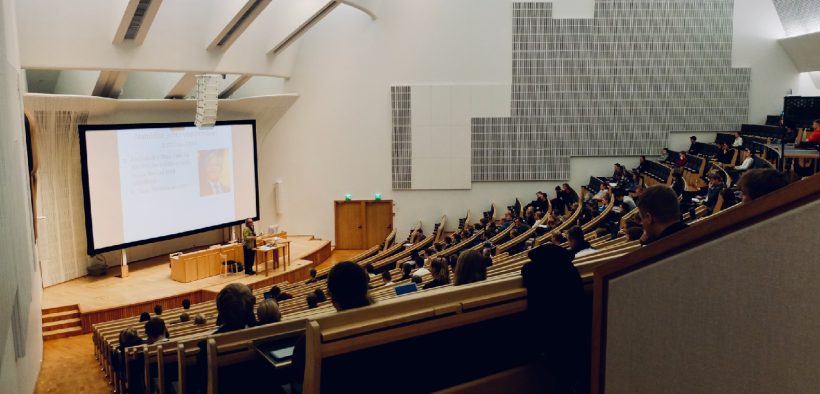As professors dedicated to improving our teaching, we often grapple with the challenge of limited time to influence our students’ learning experiences. As experts in our fields, we bear the responsibility of not only imparting knowledge and fostering critical thinking but also cultivating a supportive classroom community and addressing students’ “soft skills.” Recognizing the significance of these additional components, I delved into research to explore the benefits of integrating social and emotional learning (SEL) into my lessons. The profound impact I discovered convinced me to gradually incorporate SEL components into both online and in-person classes, resulting in a transformed classroom climate and enhanced student learning. In this article, I hope to share how effortless and valuable it can be for you to embark on a similar journey with your students.
The importance of SEL in higher education
Initially, I considered social and emotional skills to be the domain of elementary and secondary teachers, thinking that as a college instructor I needed to focus primarily on content coverage. But I came to understand that SEL encompasses a process through which learners at all levels, including adults, acquire and apply the necessary knowledge and skills to understand and manage emotions, set goals, demonstrate empathy, establish positive relationships, and make responsible decisions (CASEL, n.d.).
While SEL has long found favor in K–12 education, its application in higher education is on the rise, with emerging research highlighting its positive impacts. Conley (2015) argues that incorporating SEL competencies in learning leads to various positive outcomes within and beyond the course. These outcomes encompass improved academic performance, higher retention rates, success in the workforce, positive interpersonal relationships, and enhanced mental health and overall well-being. Recent studies have also shown that SEL implementation can help overcome barriers in working with international students (Yeh et al., 2021). Furthermore, SEL teaching strategies have demonstrated increased interest and motivation in earth science classes and improvements in the classroom environment (Biber, 2020; Elmi, 2020).
According to CASEL, a leading organization for SEL, the five core competencies of SEL are self-awareness, self-management, responsible decision making, social awareness, and relationship skills. To integrate SEL into my classroom, I began by targeting these competencies and implementing readily accessible practices. These practices included conducting regular check-ins with students (self-awareness), facilitating goal setting and progress reflection (self-management), providing opportunities for paired interviews (relationship skills), using field-based scenarios (responsible decision making), and cultivating a growth mindset and fostering a sense of belonging (social awareness). The results were consistently positive, not only benefiting my students but also transforming the classroom environment into a welcoming, relaxed, and enjoyable space.
Strategies for incorporating SEL competencies in teaching
To help you integrate social and emotional activities into your classroom routine, Table 1 below provides several ideas and specific strategies for each SEL competency (some of which you may be doing already).
| SEL Competency | General Ideas | Specific Strategies |
| Self-awareness |
|
|
| Self-management |
|
|
| Relationship skills |
|
|
| Social awareness |
|
|
| Responsible decision making |
|
|
Conclusion
By integrating SEL into our teaching practices, we invest in our students’ holistic growth, leading to a transformed classroom climate and improved learning outcomes. The incorporation of social and emotional activities does not demand significant time commitments but offers substantial benefits for our students’ academic, personal, and professional development. As professors, we must seize the opportunity to create inclusive, supportive learning environments where our students can thrive academically and develop essential life skills. Time spent on SEL is truly time well spent.
References
Biber, D. (2020). Social emotional learning for a college classroom. College Teaching, 68(1), 49–52. https://doi.org/10.1080/87567555.2019.1709408
CASEL. (n.d.). Fundamentals of SEL. Retrieved June 1, 2023, from https://casel.org/what-is-sel
Conley, C. S. (2015). SEL in higher education. In J. A. Durlak, C. E. Domitrovich, R. P. Weissberg, & T. P. Gullotta (Eds.), Handbook of social and emotional learning: Research and practice (pp. 197–212). The Guilford Press.
Elmi, C. (2020). Integrating social emotional learning strategies in higher education. European Journal of Investigation in Health, Psychology and Education, 10(3), 848–858. https://doi.org/10.3390/ejihpe10030061
Yeh, E., Sharma, R., Jaiswal-Oliver, M., & Wan, G. (2021). Culturally responsive social emotional learning for international students: Professional development for higher education. Journal of International Students, 12(1), 19–41. https://doi.org/10.32674/jis.v12i1.2976
David Pratt, PhD, is an associate professor of teacher education at Purdue University Northwest. He specializes in preparing K–12 preservice teachers for effective uses of assessment and educational technology. He has won several teaching awards and serves as a peer coach for faculty through Purdue Northwest’s Center for Faculty Excellence.






